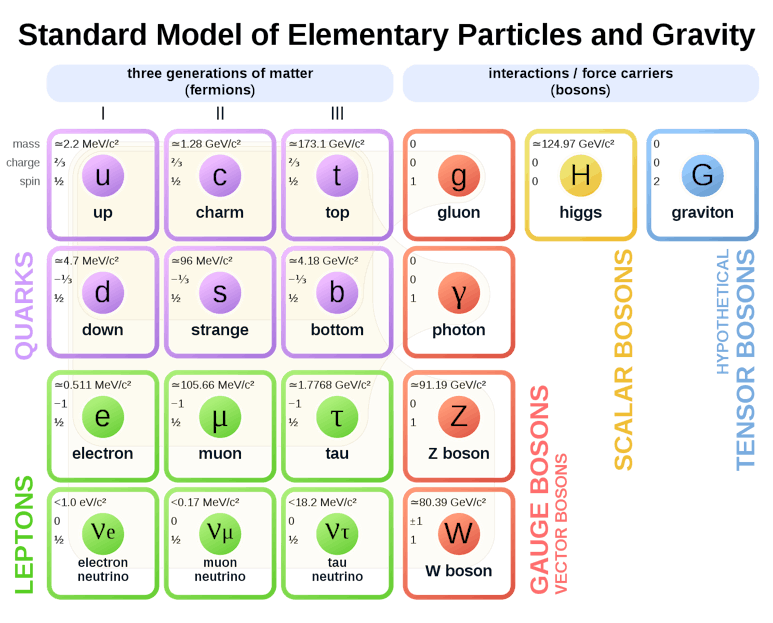Most people can probably remember learning about the famous, yet not entirely accurate, Bohr model of the atom — a dense proton and neutron filled nucleus surrounded by layers of negatively charged electrons. The atom was introduced to me in elementary school as the fundamental building block of all matter, but that simplification hides an incredibly quirky world filled with intrigue and unanswered questions.
The search for fundamental particles of matter has been a goal of scientists and researchers for centuries. A fundamental particle is something as small as matter can get. If it can’t be broken down into a smaller particle, it’s a fundamental particle.
For a while, many thought they had found the answer with protons, neutrons, electrons and mesons. In 1968, an experiment at Stanford Linear Accelerator Center National Accelerator Laboratory based on the work of physicists Murray Gell-Mann and George Zweig would — along with countless later experiments at the CERN particle accelerator — help prove protons and neutrons are made of something: quarks.

Cush/Wikimedia Creative Commons
It turned out protons and neutrons were made up of a combination of these quarks. A proton contains two up quarks and one down quark, meanwhile neutrons contain one up quark and two down quarks. Additionally, it turned out the same force that held together the nucleus — the strong force — held together quarks within the protons and neutrons.
The strong force is one of four elemental forces we know of in our world, alongside electromagnetism, gravity and the weak force.
And what about electrons? Electrons are also, as far as we know, a fundamental particle. Are they a quark? Well, to the disappointment of any student studying particle physics, no. It’s more complex than that.
They are grouped as leptons, which are also fundamental particles but respond only to the electromagnetic force, weak force and gravitational force. Distinguishing them from quarks, they are able to exist on their own and do not interact through the strong force.
So, why is this all interesting?
Well, to me, there are a couple of reasons. Though we think quarks, leptons, and Higgs boson and gauge boson particles — the last two of which I simply did not have space to expand on here — are the fundamental particles of matter, we’re not entirely sure.
All experiments we’ve ever run on subatomic particles seem to indicate they don’t have a substructure, but who knows what future scientific advancement may discover. As our belief that protons and neutrons were fundamental particles proved, fundamental particles are only considered fundamental for as long as we aren’t able to split them.
The other reason I think that they’re interesting? A 150-pound human is made up of 6.5 octillion atoms, according to an estimate from a chemist at West Virginia University. Most atoms contain multiple protons, neutrons and electrons, so try to imagine just how large the number of quarks and leptons that make up a human is. Then look at your surroundings — I find it truly baffling.
This story only scratches the surface of particle physics, and I had to completely omit for space some other quarks such as charm, strange, top and bottom quarks — let alone some of the other leptons.
It’s part of what makes this so interesting to me — we continue to learn new facts about these particles every day.
So the next time you look out at the sky and think about how far our universe may reach, never forget the equally intricate and incredible world forming all of our biology, chemistry or even physics, in the form of particle physics.
Ian Wilder is a sports editor for The Daily Cardinal. He's covered the men’s hockey beat, and has written in-depth about state politics and features. Follow him on Twitter at @IanWWilder.






